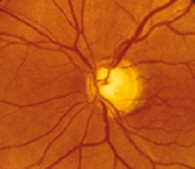Peer Reviewed
Feature Article Ophthalmology
Glaucoma: advances in assessment and therapy
Abstract
Recent advances in diagnostic techniques have improved the early detection of glaucoma, and new medications have increased the therapeutic options for patients with this condition.
Key Points
- New diagnostic techniques, including computerised perimetry and nerve fibre analyses, have been developed to detect glaucoma at an earlier stage; their accuracy is being evaluated.
- Several new classes of drugs have been released increasing the therapeutic options for glaucoma, including selective 2-adrenergic agonists, prostaglandin analogues and topical carbonic anhydrase inhibitors.
- Glaucoma research has moved away from drugs that protect the optic nerve by reducing intraocular pressure and is now focusing on pressure-independent agents.
- Poor compliance with glaucoma medication remains a major problem; GPs have an important role in reinforcing the treating ophthalmologist’s advice and helping to improve compliance.
Purchase the PDF version of this article
Already a subscriber? Login here.

